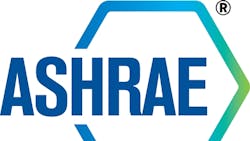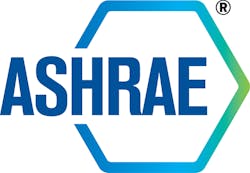Guidance on New ASHRAE/IES Energy-Standard Compliance Path Available
A newly published document gives users of ANSI/ASHRAE/IES Standard 90.1 (I-P), Energy Standard for Buildings Except Low-Rise Residential Buildings, immediate access to an optional third path for compliance.
“This document is being provided at the request of users,” Drake Erbe, chair of the Standard 90.1 committee, said. “This is the first time ASHRAE and IES have made available an interim clean publication of a portion of Standard 90.1, and we are doing so now because users have expressed a critical need for this guidance. Several entities have expressed interest in developing programs based on the revised appendix. This release also gives advanced notice to software developers that may be interested in automating the process of creating the Appendix G baseline.”
Erbe said the guidance in Addendum bm had two significant impacts on Appendix G.
“Previously, Appendix G was used only to rate ‘beyond code’ performance of buildings, but could not be used to demonstrate compliance with the base 90.1 standard,” Erbe said. “Now, the standard provides that compliance path and gives credit for integrated design, resulting in energy savings, such as efficient use of building mass, optimized building orientation, efficient HVACR-system selection, and right-sizing of HVACR equipment.”
Use of the new version of Appendix G to show compliance with the 2016 version of the standard requires a proposed building design to have a Performance Cost Index (PCI) less than that shown in Table 4.2.1.1 based on building type and climate zone.
The second change is that the baseline design is now fixed at a certain level of performance, the stringency of which is expected not to change with subsequent versions of the standard. By this, a building of any era can be rated using the same method with the same baseline of compliance. The intent is that any building energy code or beyond-code program can use this methodology and simply set the appropriate target for their needs analogous to those in the table. Therefore, a beyond-code program may wish to set a target less than is shown in the table (a target of 0 is a net-zero building), while compliance with a previous version of the standard may wish to set a target above what is shown. Because unregulated loads are not included in the compliance target in Table 4.2.1.1, beyond-code programs that encourage improvement in unregulated loads may wish to modify the target to include those loads.
Other addenda included in the excerpt are:
- Addendum k, which directs the modeler to use the default assemblies in Appendix A for baseline opaque envelope assemblies.
- Addendum r, which establishes the hierarchy of the decision-making process for selecting baseline HVAC systems.
- Addendum z, which provides detail on the simulation of baseline building heat pumps, including how auxiliary heat is used in conjunction with heat-pump heating.
- Addendum aa, which provides direction regarding when it is appropriate to model a heating-only system in Appendix G.
- Addendum ad, which clarifies when baseline HVAC systems should be modeled with preheat coils.
- Addendum dx, which makes changes to the baseline lighting-power allowances in Appendix G.
Erbe noted that while it is likely the version of Appendix G published in the 2016 edition of the standard will include additional changes to Appendix G, it is not likely they will be as extensive as those included in Addendum bm. The primary focus is to make the new methodology with a fixed baseline available so users become familiar with it.
The cost of Standard 90.1-2013 Appendix G: Performance Rating Method is $35 for ASHRAE members and $41 for nonmembers. Copies can be ordered by phone at 1-800-527-4723 (United States and Canada) or 404-636-8400, by fax at 678-539-2129, or online at www.ashrae.org/bookstore.

